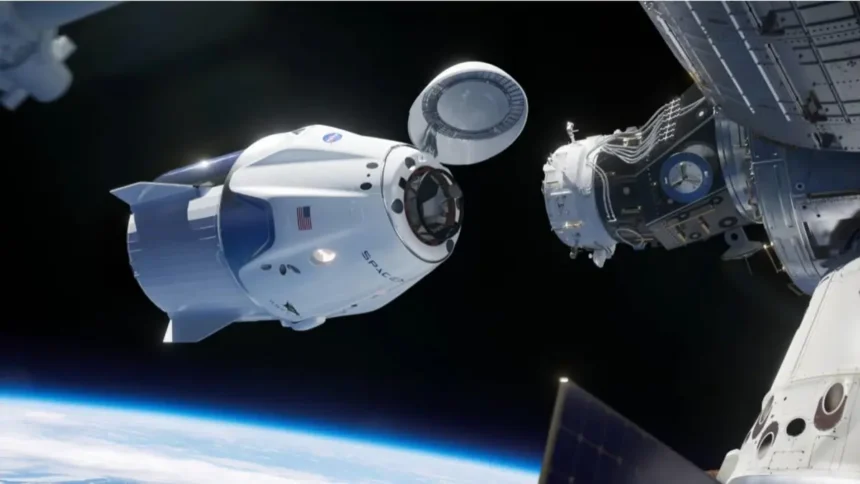SpaceX is gearing up for another key mission involving its Dragon capsule as it heads to the International Space Station (ISS) to transport astronauts from Boeing’s Starliner spacecraft back to Earth. This mission, marking SpaceX’s 15th crew mission since 2020, will be critical in managing the transition of NASA’s astronauts and ensuring the success of both companies in human spaceflight. With the backdrop of Boeing’s ongoing technical challenges, SpaceX’s role in maintaining the smooth operation of the ISS crew rotation has grown in importance
What’s Happening & Why This Matters
On this mission, SpaceX will transport NASA astronaut Nick Hague and Russian cosmonaut Aleksandr Gorbunov to the ISS. They launched aboard a Falcon 9 rocket from Florida’s Space Coast. Unlike previous missions, only two astronauts were aboard the Dragon capsule this time due to unexpected complications with Boeing’s Starliner, which was originally slated to handle the return of astronauts Butch Wilmore and Suni Williams.
The Starliner spacecraft encountered thruster failures and helium leaks during its test flight, leading NASA to declare it too risky to bring the crew back using that vehicle. While the spacecraft safely returned to Earth on its own in September, it left Wilmore and Williams stranded on the ISS.
To address this, NASA and SpaceX quickly modified the current Dragon mission to ensure Wilmore and Williams have safe transportation back to Earth. Temporary foam seats were installed on the Dragon spacecraft currently docked at the ISS, allowing for emergency evacuation if necessary.

NASA originally planned a four-person crew for this Dragon flight, but Wilmore and Williams will now take two seats on a future Dragon flight. In response, NASA adjusted the mission roster, allowing Hague to take command in place of Zena Cardman and making adjustments to other astronaut roles to ensure a seamless mission.
Operational Flexibility
This launch is also notable for being the first human spaceflight from Space Launch Complex-40 (SLC-40) at Cape Canaveral. With the ability to launch astronauts from two different pads, SpaceX now has more scheduling flexibility, allowing missions to avoid conflicts with other critical launches, such as NASA’s upcoming Europa Clipper mission, which requires a launch from the Falcon Heavy pad. This enhanced flexibility demonstrates SpaceX’s growing capability and partnership with NASA in ensuring the success of its spaceflight operations.

SpaceX is continuing to refine its Crew Dragon spacecraft, incorporating new safety features. One such feature includes a backup system that allows the spacecraft to safely splash down even if all parachutes fail, utilizing the spacecraft’s powerful SuperDraco thrusters. These innovations continue to enhance the reliability and safety of space travel.
TF Summary: What’s Next
As this mission gets underway, the focus remains on safely returning the astronauts to Earth and ensuring the continued success of both SpaceX and Boeing in the commercial crew program. NASA will work closely with both companies to resolve ongoing technical issues and to maintain operational flexibility in future space station missions. With SpaceX now equipped with additional launch capabilities, it is poised to play an even more prominent role in human spaceflight
— Text-to-Speech (TTS) provided by gspeech


